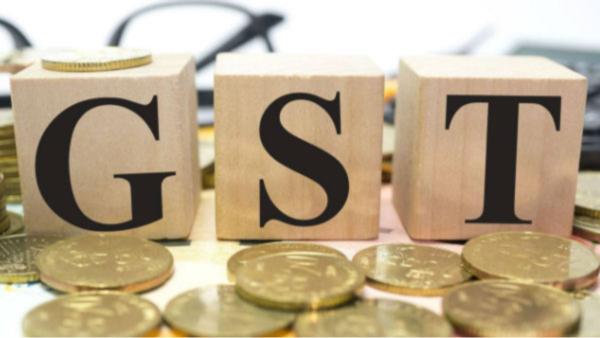The Central Government has announced a landmark overhaul of the Goods and Services Tax (GST) system, calling it the biggest reform since its launch in 2017. Approved at the GST Council meeting chaired by Finance Minister Nirmala Sitharaman, the Next-Generation GST Reforms will come into effect on September 22, 2025.
Prime Minister Narendra Modi described these reforms as a “Diwali gift” for households, businesses, and startups—promising lower costs, easier compliance, reduced litigation, and stronger growth.
Key Highlights of the Next-Gen GST Reforms
-
Two main slabs introduced: 5% and 18%
-
40% slab for luxury and sin goods (premium cars, alcohol, tobacco)
-
Current four-slab structure (5%, 12%, 18%, 28%) replaced
-
Textiles realigned under 5% → fixing inverted duty issues for spinners and MSMEs
-
Hotels simplified to 5% and 12% slabs → boosting tourism and hospitality
-
Small cars moved from 28% to 18% slab → making them more affordable
-
Agricultural products, farm equipment, and life/health insurance premiums under lower GST
-
General insurance (motor, property) likely to remain at 18%
-
AI-powered GST portal to resolve classification disputes and support compliance
-
Tech-driven reforms: pre-filled returns, faster refunds, and AI-enabled checks
-
Compensation cess phase-out addressed to ensure fiscal stability
-
Roadmap for single slab by 2047 aligned with India’s global tax competitiveness
Benefits for Stakeholders
1. For Consumers
-
Daily essentials like toothpaste, shampoo, food items, and kitchenware under 5% slab
-
Electronics, appliances, and budget vehicles cheaper under 18% slab
-
Life and health insurance premiums reduced to 5% → more affordability
-
General insurance clarity: motor and property remain at 18%
-
Lower household costs → higher disposable income ahead of Diwali
2. For Startups, MSMEs, and Entrepreneurs
The reforms aim to remove long-standing pain points for India’s innovation ecosystem.
-
Single-click digital registration → less paperwork
-
Pre-filled GST returns → reduced compliance burden
-
Automated refunds → faster liquidity for early-stage ventures
-
AI-based classification & dispute resolution → fewer litigations
-
Inverted duty correction → stronger cash flow for manufacturers/MSMEs
-
Global best practices → builds trust with VCs, PEs, and international investors
For startups, this means more time on growth, less time on tax complexities.
3. For Key Sectors
-
Textiles & Apparel: 5% uniform GST to fix inverted duty and support MSMEs
-
Hospitality & Tourism: Hotels under 5% and 12% only → affordable stays, higher tourist inflow
-
Automotive: Small cars moved from 28% to 18% → boosts demand in entry-level car segment
-
Agriculture: Lower tax on farm equipment and products → strengthens rural economy
-
Insurance & Fintech: Affordable premiums encourage financial inclusion, benefiting insurtech and fintech startups
-
Services sector (IT, SaaS, fintech): Simplified compliance reduces time and cost burdens
The Three Pillars of GST 2.0
The Finance Ministry highlighted three key pillars driving GST 2.0:
-
Structural Reforms
-
Fix inverted duty structures
-
Provide clarity in classification
-
Promote a litigation-free GST regime
-
-
Rate Rationalisation
-
Merge four slabs into two (5% and 18%)
-
Maintain fiscal balance after compensation cess expiry
-
Align with global tax competitiveness
-
-
Ease of Living & Doing Business
-
AI-powered GST portal for classification and compliance
-
Pre-filled GST returns and faster refunds
-
Focus on reducing disputes and improving trust
-
Why This Reform Matters for Startups
-
Lower input costs → reduces expenses for e-commerce, SaaS, fintech, and retail startups
-
Simpler compliance → saves founders’ time and resources
-
Improved liquidity → faster refunds help early-stage ventures
-
Increased consumer demand → cheaper essentials and vehicles fuel growth in B2C sectors
-
Investor-friendly environment → global-standard taxation boosts confidence among VCs and international funds
Simply put, GST 2.0 is not just a tax reform—it’s a pro-business and pro-startup reform that strengthens India’s innovation-led economy.
Conclusion
The Next-Generation GST Reforms, effective from September 22, 2025, mark a major milestone in India’s economic journey. By simplifying slabs, introducing tech-enabled compliance, and focusing on reducing litigation, these reforms will:
-
Ease costs for households
-
Empower startups and MSMEs
-
Strengthen key sectors like textiles, tourism, automotive, agriculture, and fintech
-
Build investor confidence with global-standard tax reforms
-
Lay the foundation for India’s long-term vision of a single tax slab by 2047
At Innovent Blog, we remain committed to delivering authentic, actionable insights on how government policies shape the future of startups and the wider business ecosystem.

